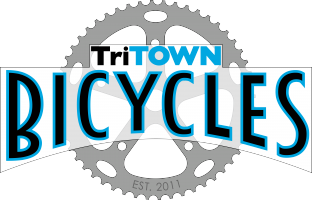Lessons from Dump Loop Testing
- Posted on
- By Antonio Gonzalez
- Posted in bicycle tech, training/coaching
- 0
An ongoing blog for sharing bicycle field tests results of a variety of variables on Boise's Dump Loop.
For 2020 I'm committed to testing a variety of variables on Boise's Dump Loop, with the hope to have a better of understanding of "what is faster". I'll update this blog as I test more variables. If you have ideas you'd like me to test or thoughts please post them below.
The Course:
The “Dump Loop” is a 17.5 mile continuous loop in the North End of Boise with 1,450 ft of climbing. It’s a popular loop with a variety of long and steady climbs as well as short and punchy hills. I use this loop as it has an almost continuous bike lane, only takes right hand turns, and requires no stops and minimal braking despite the descents.
I segmented the loop into 3 parts, taking average power and time splits for each segment:
Segment #1 is the relatively flat stretch starting from Bogus Basin Road and Hill Road and heading North on Hill.
Segment #2 is the long steady climb and descent that begins at the base of the climb at Seaman’s Gulch, descends past the entrance to Hidden Springs, and continues to the right hand turn onto Dry Creek Road.
Segment #3 is the longest segment of punchy climbs that takes you behind Hidden Springs and eventually descends back to the Bogus Basin Road and Hill Road.
Thoughts on Consistency and Validity:
This is in no way scientific, but I'll do my best to control the variables that I can, and by regularly repeating these tests I hope to identify trends and patterns from which to make informed conclusions. At this time I believe any time difference of around 1min or more is of significance, and would be enough to rule out the effect of most variables outside my control like subtle wind changes or cars passing by.
If you have a power meter on your bike and would like to replicate some of these tests please do so and send me the results!
AERO ROAD BIKE VS TRI BIKE:
2/13/20 Test (1 lap per bike)
Equipment Summary: 2019 Cervelo S5 aero road bike (19.5lbs) vs 2019 Cervelo P5 Disc (21.5lbs). Same wheels (80psi).
Position Summary: S5 on brake hoods entire time. P5 in aerobar so long as speed above 12mph. In aerobars on straight descents, out of aerobars for turns on descents.
Power Summary: S5 avg watts = 233w. P5 avg watts = 230w.
Result: P5 faster by 2 min 37 seconds.
RIDING ON THE HANDLEBAR HOODS VS ON THE DROPS
2/20/20 Test (1 lap per bike)
Equipment Summary: 2019 Cervelo S5 aero road bike (19.5lbs) for both laps.
Position Summary: Lap 1 stayed on brake hoods entire time. On Lap 2 road in drops entire time (including climbs), and tried to get as low as safely possible on the descents.
Power Summary: Lap 1 avg watts = 232w. Lap 2 avg watts = 233w.
Result: Riding in the lower handlebar drop position was faster by 39 seconds.
TIRE PRESSURE @ 100psi vs 80psi vs 60psi
TBD (1 lap per pressure setting)
Equipment Summary: 2019 Cervelo S5 aero road bike (19.5lbs), stock DT Swiss wheelset, 700 x 23mm Grand Prix 4000 tires w/ butyl tubes. Actual tire dimensions measure out to 25mm on these rims.
Position Summary: Stayed on brake hoods entire time for all laps.
Power Summary:
Result: (to be posted)
STOCK WHEELS VS RACE WHEELS
3/15/20 Test (1 lap per setup)
Equipment Summary: 2019 Cervelo P5 Ultegra Di2 stock setup triathlon bike (19.5lbs) vs the same bike with Reynolds 60mm Carbon Race wheels. Tires are GP 5000's @ 80psi.
Position Summary: In aerobars so long as speed above 12mph. In aerobars on straight descents but out of aero for turns.
Power Summary: Lap 1 (stock wheels) avg watts = 240w. Lap 2 (race wheels) avg watts = 237w.
Result: Race wheels were faster by 1min 38sec. (note: wind picked up a bit on lap 2, possibly skewing results).
Like this content? Please subscribe to our weekly newsletter.

Comments
Be the first to comment...